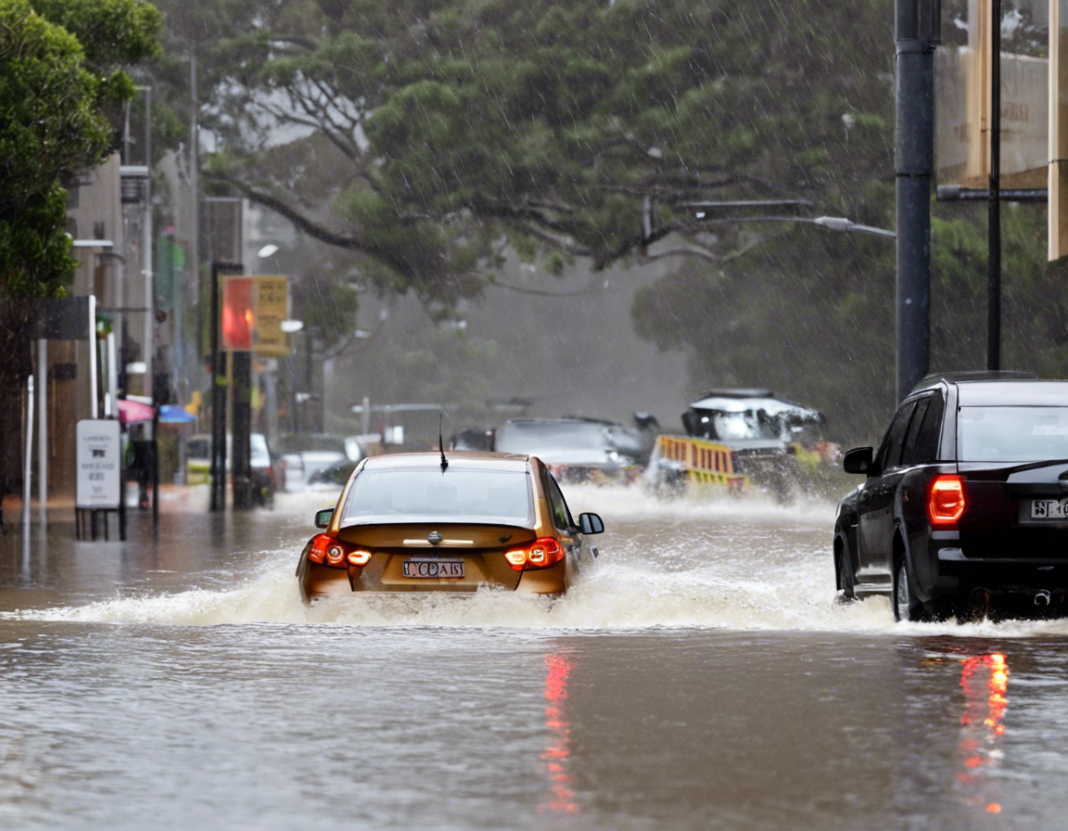With the change in climate patterns, the frequency of extreme weather events such as floods has been on the rise. Sydney, the capital of New South Wales in Australia, is prone to flooding due to its geographical location and topography. It is essential for residents and authorities to be prepared for flood warnings and take necessary precautions to minimize damage and ensure safety.
Understanding Floods in Sydney
Flooding in Sydney can be caused by various factors such as heavy rainfall, overflowing rivers, storm surges, or flash floods. The city’s proximity to the ocean and presence of rivers like the Hawkesbury-Nepean River system make it vulnerable to inundation during periods of intense rainfall. Climate change has also exacerbated the situation by leading to more frequent and severe weather events.
Types of Floods in Sydney
-
Riverine Floods: These occur when river levels rise and overflow their banks, affecting low-lying areas along the river.
-
Flash Floods: Sudden and intense rainfall can cause flash flooding in urban areas, leading to rapid water accumulation and posing a significant risk to infrastructure and lives.
-
Coastal Floods: Storm surges and high tides can result in coastal flooding, impacting areas near the coast and river mouths.
Stay Informed with Flood Warnings
To effectively prepare for floods, it is crucial to stay informed about flood warnings issued by the relevant authorities. In Sydney, the Bureau of Meteorology (BOM) plays a key role in monitoring weather patterns and issuing alerts about potential flooding events. Residents can subscribe to emergency alert systems and follow official channels for up-to-date information.
Key Points to Remember:
-
Monitor weather forecasts regularly: Stay informed about upcoming weather conditions and any potential risks of flooding in your area.
-
Understand flood terminologies: Be familiar with terms like “flood watch” (potential for flooding), “flood warning” (flooding is expected), and “evacuation order” (immediate evacuation required).
-
Follow evacuation orders: If authorities issue an evacuation order for your area, prioritize your safety and follow the instructions given.
Preparing for Floods: A Checklist
Being prepared can help minimize the impact of floods on your property and well-being. Here is a checklist of essential steps to take before, during, and after a flood:
Before the Flood
-
Create an emergency plan: Establish a family emergency plan that includes evacuation routes, emergency contacts, and essential supplies.
-
Prepare an emergency kit: Pack a bag with necessities such as food, water, medications, important documents, cash, and a flashlight.
-
Secure your home: Clear gutters, elevate electrical appliances, and move valuables to higher ground to prevent water damage.
During the Flood
-
Listen to authorities: Follow instructions from emergency services and evacuate if advised to do so.
-
Avoid floodwaters: Do not attempt to drive or walk through flooded areas as they may be deeper or faster-moving than they appear.
-
Turn off utilities: Switch off electricity, gas, and water supplies to prevent accidents and damage.
After the Flood
-
Assess damage: Take photos of any damage to your property for insurance purposes and document losses.
-
Clean up safely: Wear protective gear while cleaning up flood water and debris to prevent injuries and contamination.
-
Contact your insurer: Notify your insurance company about the flood damage and initiate the claims process.
Frequently Asked Questions (FAQs) about Floods in Sydney
1. How common are floods in Sydney?
Floods are relatively common in Sydney, with both riverine and flash floods occurring periodically, especially during the rainy season.
2. What areas in Sydney are most susceptible to flooding?
Low-lying areas near rivers, creeks, and coastal regions are at higher risk of flooding in Sydney.
3. How can I protect my property from flooding?
Installing flood barriers, raising electrical sockets, and waterproofing basements can help protect your property from flood damage.
4. Are there insurance options for flood damage in Sydney?
While standard home insurance may not always cover flood damage, there are options for purchasing additional flood insurance to protect your property.
5. What should I do if my area is under a flood warning?
If your area is under a flood warning, stay tuned to official updates, prepare an emergency kit, and be ready to evacuate if necessary.
6. Can climate change worsen flooding in Sydney?
Climate change can lead to more intense rainfall and rising sea levels, which can exacerbate flooding risks in Sydney and other coastal areas.
7. How does urban development impact flood risk in Sydney?
Urbanization can increase the likelihood of flooding by reducing natural drainage systems and increasing impermeable surfaces that prevent water absorption.
8. What role do emergency services play during floods in Sydney?
Emergency services coordinate rescue operations, provide assistance to affected residents, and disseminate vital information during flood events in Sydney.
9. Is it safe to return home immediately after a flood?
It is important to wait for authorities to declare the area safe before returning home to assess damage and begin cleanup activities.
10. How can communities work together to mitigate flood risks in Sydney?
Community engagement, early warning systems, proper urban planning, and sustainable water management practices can help reduce flood risks and build resilience in Sydney.
By understanding the nature of floods in Sydney, staying informed about flood warnings, and taking proactive measures to prepare for such events, residents can safeguard their well-being and property against the impacts of flooding. Remember, preparedness is key to resilience in the face of natural disasters.

